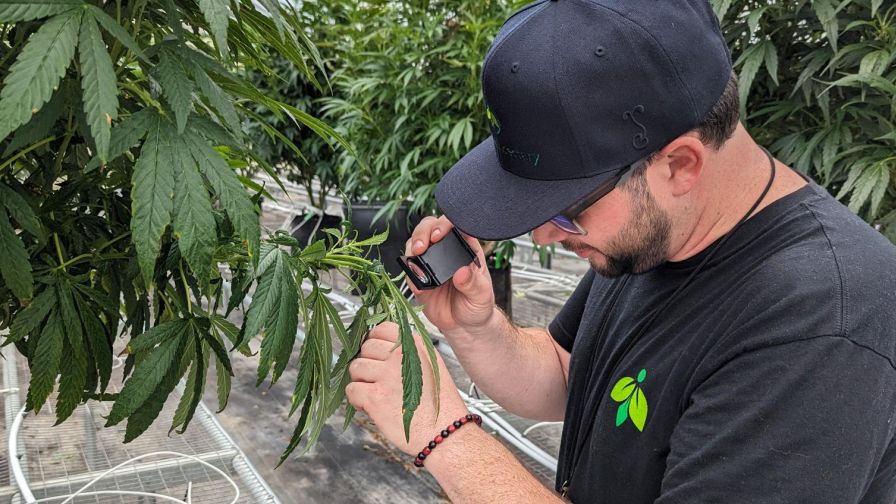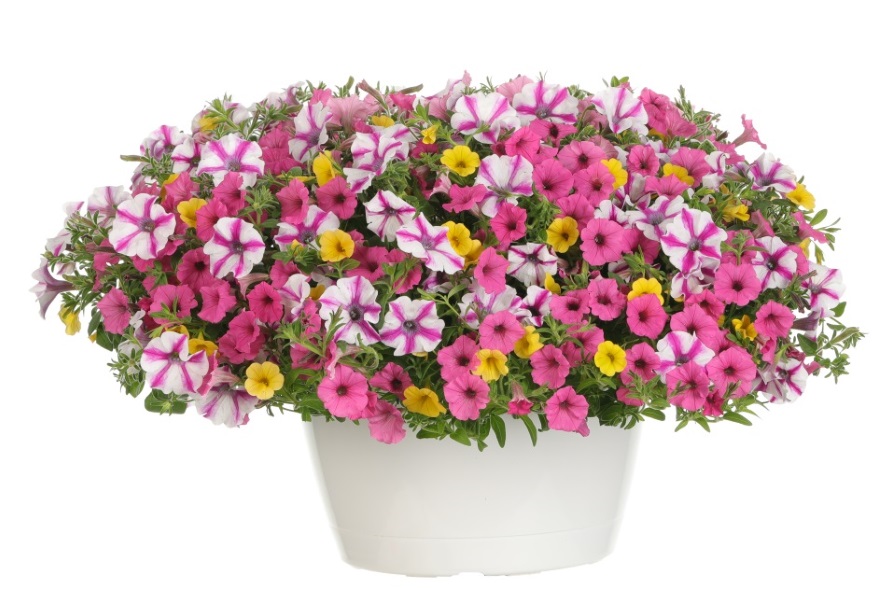The Next Era of Greenhouse Crop Protection is Here

Thrips, such as Western flower thrips (Frankliniella occidentalis), onion thrips (Thrips tabaci), and pepper thrips (Thrips parvispinus) are challenging for ornamental crops because there are little to no chemical pesticides for them. Dr. Rose Buitenhuis, Director of the Biological Crop Protection Program at Vineland Research and Innovation Centre, says thrips have forced growers to use biocontrols. Photo: Ashley Summerfield, Vineland Research and Innovation Centre
Twenty-seven years ago, less than 10% of commercial greenhouse operators surveyed in the Midwest used biological control agents (BCAs) as part of their pest management programs. This year, only 8% of respondents to Greenhouse Grower’s survey of Top 100 Growers weren’t using bios.
Biologicals are more than lacewings and lady beetles. “When you talk about biologicals, 90% of people will think of BCAs, predators, parasitoids, parasitic nematodes, things like that. When I talk biologicals, I’m talking about our micro-friends, not our macro-friends. I’m talking bacteria and fungi,” says Dr. Chris Hayes, Senior Biological Solutions Advisor at BioWorks.
Why Growers are Shifting to Bios
Shifting to bios isn’t fast — there’s a learning curve. It isn’t less expensive, although growers may find the total cost of chemical control and bios are similar (add up the protective suits, the training, storage requirements, disposal costs, and time lost waiting for the restricted entry interval (REI) to re-enter a bay). Using bios is more complex than the old spray-and-pray methods. So why do growers make the switch?
“One of the main reasons people are starting to adopt it (bios) is due to state regulation, and it varies state by state. At the end of the day, it’s starting to get stricter,” says Cody Mitchem, IPM Specialist at Beneficial Insectary.
Restrictive regulations can leave a hole in pest protection programs without chemicals to fill it.
“In Canada, we don’t have many chemical pesticides registered. It’s a smaller market, not as big as the U.S. or Europe, for example. So for pests like thrips, we have no pesticides that work,” says Dr. Rose Buitenhuis, Director of the Biological Crop Protection Program at Vineland Research and Innovation Centre.
Resistance is also an issue for growers, and even new pesticide formulations can start to lose efficacy in as little as a year when applied often.
“Growers, the industry, and the government realize that using pesticides may work in the short term, but it’s not a long-term sustainable option. And that’s not just because we all want to be good for the environment. Pests and diseases develop resistance against the chemical pesticides,” says Buitenhuis. “By not using pesticides for a while, growers can claw back a bit of that efficacy. But overall, pests like thrips have really forced the growers to make biological control work for them.”
Customers, whether individuals or retailers, are pushing for fewer chemical pesticides and more natural solutions.
“Contracts are being created by big box stores limiting what insecticides can be used. Insecticide resistance and big box contracts are forcing growers to adopt (bios). For example, now you can’t use neonicotinoids,” says Mitchem. “Some of the biggest greenhouses I’ve worked with have had to switch because of that.”
“More and more growers see that they need to do biocontrol, that they do need to get off that regular pesticide spray program. Resistance is a very good example, but there are also other reasons, like worker health and safety, recirculation of water, and pollinators for crops. You don’t want pesticide residues if you later have to filter them out,” says Buitenhuis.

Cody Mitchem, IPM Specialist at Beneficial Insectary, uses a loupe to inspect the underside of plants for small pests, such as mites, thrips, and aphids. Photo: Cody Mitchem, Beneficial Insectary
Benefits and Challenges of Bios
While chemicals can be stored for long periods, biologicals are alive, and timing is critical, whether that means having someone on hand to receive the shipment and check viability or making a timely application.
Tim McGinty is the General Manager and COO at North Creek Nurseries. “I started in this business more than 30 years ago spraying conventional pesticides,” he says. They grow natives, so the reputation of their plants being safe — no neonicotinoids, for example — is essential. “There is value in our reputation that our nursery stock is safe to plant out in the environment.”
Switching to biologicals and keeping the chemistry in reserve can mean greater efficacy when a spray is required. North Creek Nurseries has experienced this benefit themselves.
“After a few years of no spray, we had a problem caused by the contracted groundskeeping crew. I called our (bio) supplier. They told us to use this pesticide we still had on the shelf and hadn’t used in a while. We got knock down like in the old days. Then we reapplied our bios,” McGinty says.
How to Incorporate BCAs in Your IPM Program
Perhaps the most critical aspect of successfully incorporating biologics into your IPM program is establishing good communication with your vendor. Biologics vendors and growers typically form a long-term partnership. Poor performance likely means a one-time customer who won’t be back. When choosing a vendor, look for one with knowledgeable experts who are responsive to your questions. Don’t be afraid to explain your situation and ask for assistance.
Scouting and record keeping is a good place to start, and developing a historical pattern of what pest arrives each week of the season is invaluable.
“At the onset, we were a week late. We’d see an infestation and go order bugs to control it, but the bugs take time to arrive,” McGinty says. Now, they have a year-long program based on historical data of when problems occur and how much product they’ll need to treat it.
Biologicals are living things that take time to produce. Building a forecast and sharing it with your supplier can ensure you’ll have the product you need when you need it. Shifting to biological control means establishing a pattern and being proactive instead of reactive.








